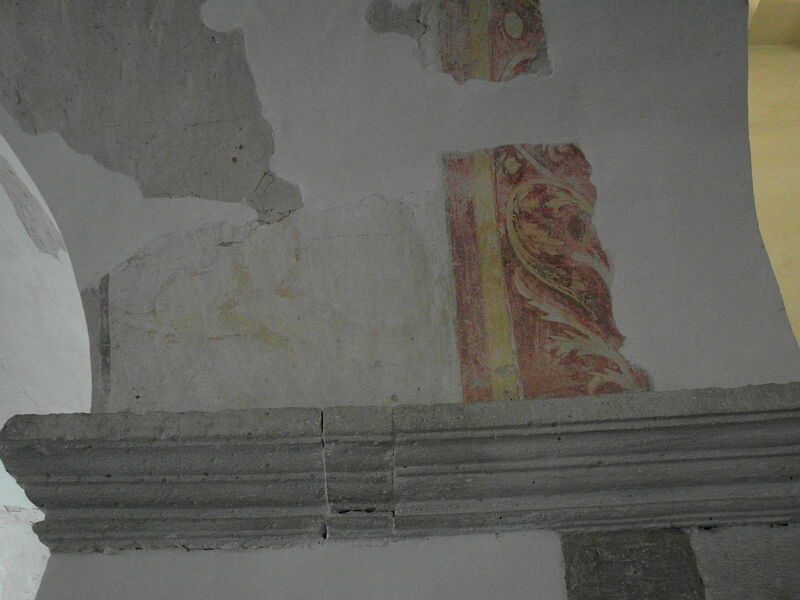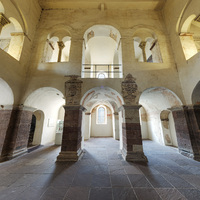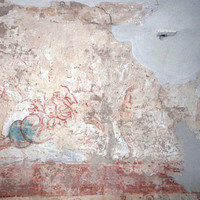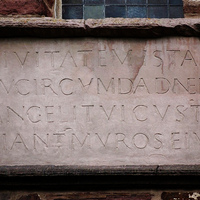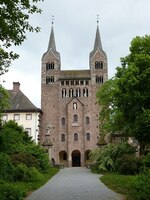Corvey westwork
Type:
Churches,
Monasteries,
Wall paintings
Date:
873 to 885
Location or Findspot (Modern-Day Country):
Germany
Description:
The earliest surviving westwork is at Corvey, an important Carolingian monastery founded in the 820s. The imposing west facade was completed between 873 and 885 and made taller in the twelfth century. Its projecting four-story porch is flanked by two square towers punctuated by window slits. The statue on the facade occupies what was originally a round window.
The groin-vaulted ground floor of the westwork opens into what is now a postmedieval church. Stairs in the tower lead to a large upper-story chapel encircled by a gallery. On the second floor are remains of frescoes that depict stories of Ulysses from classical mythology, including his encounter with Scylla, a multiheaded female beast. These images presumably reminded the monks of the monsters and temptations in the world outside the monastery.
The westwork monumentalized the church and probably responded to liturgical needs: musical notations (neumes) are incised into the plaster of the upper chapel, so the monastic choir may have performed from there. Their voices thus contrasted with the songs of the Sirens who tempted Ulysses. The upper space was also a chapel dedicated to the Savior, so it had a protective function as well. A dedicatory inscription on the facade, under the central third-story window, says, "You Lord, surround this city, and your angels guard its walls." The inscription is carved in capital letters that recall Roman epigraphy, part of the renovatio of the Roman past pursued by the Carolingian emperors.
The groin-vaulted ground floor of the westwork opens into what is now a postmedieval church. Stairs in the tower lead to a large upper-story chapel encircled by a gallery. On the second floor are remains of frescoes that depict stories of Ulysses from classical mythology, including his encounter with Scylla, a multiheaded female beast. These images presumably reminded the monks of the monsters and temptations in the world outside the monastery.
The westwork monumentalized the church and probably responded to liturgical needs: musical notations (neumes) are incised into the plaster of the upper chapel, so the monastic choir may have performed from there. Their voices thus contrasted with the songs of the Sirens who tempted Ulysses. The upper space was also a chapel dedicated to the Savior, so it had a protective function as well. A dedicatory inscription on the facade, under the central third-story window, says, "You Lord, surround this city, and your angels guard its walls." The inscription is carved in capital letters that recall Roman epigraphy, part of the renovatio of the Roman past pursued by the Carolingian emperors.
Relevant Textbook Chapter(s):
5
Repository and Online Resources:
•The Corvey westwork is a UNESCO World Heritage site.
Image Credits:
Wikimedia Commons; www.nrw-tourismus.de
